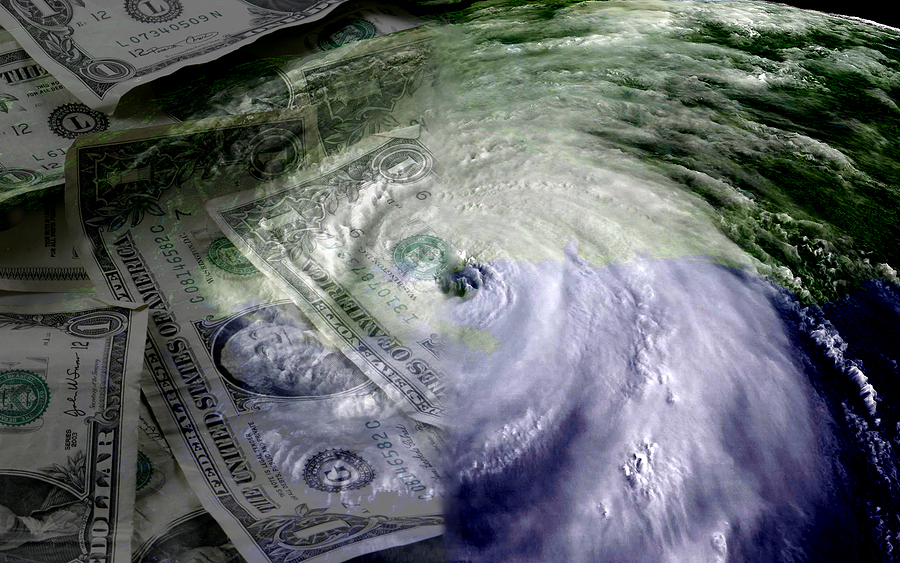Standard & Poor’s Ratings Services said it expects Hurricane Sandy to have only limited impact on the ratings on U.S. property/casualty insurers, global reinsurers, and certain catastrophe bonds.
Although it anticipate that losses from Sandy will affect (re)insurers’ fourth-quarter earnings in 2012, S&P said that for most (re)insurers the hit will be offset by strong capital bases and strong earnings through the first three quarters of 2012.
The storm is also unlikely to materially affect premium rates in loss-affected lines, in S&P’s opinion.
The agency said its opinion is based on preliminary insured loss estimates from modeling agencies that have come in around $5 billion-$15 billion. Hurricane Sandy losses are expected to exceed those of Hurricane Irene, which cost the industry $4 billion-$5 billion.
“Because the initial loss estimates are higher, we expect primary and reinsurance players to share the insured losses from Sandy; by contrast, the primary market bore the brunt of the Hurricane Irene loss event,” S&P said.
The area affected by Hurricane Sandy is one of the largest on record. While less flood damage is expected than was the case with Hurricane Irene, the industry could see higher loss amounts than it experienced after Irene because Sandy triggered flooding from record storm surge levels. In addition, Sandy hit the metropolitan New York area more directly and it merged with a winter storm in the Eastern U.S., leading to heavy snowfall and more potential damage from fallen trees. In addition, claims stemming from business interruption and contingent business interruption could be material due to widespread power-outages and the closure of public transportation systems along the Eastern seaboard.
S&P said the impact on primary insurers could be more material–the proportion of their retained losses are typically higher at the lower industry loss levels. Some of the primary insurers that are heavily exposed to Sandy are also quite concentrated in the region. These companies might be at risk of having their 2012 earnings depleted, and could even see their capital eroded, S&P analysts said.
Reinsurers have benefited from a more-benign loss year than their primary counterparts, according to S&P. Based on current estimates, they are less exposed to material losses from this hurricane.
S&P continues to view the reinsurance sector as strongly capitalized, and most reinsurers have reported very strong operating results thus far in 2012. Based on survey data submitted to S&P by reinsurers, some companies are more heavily exposed to windstorm risk in the U.S. Northeast than others. However, the same data indicates that the average reinsurer would need to experience an insured loss event in that region that was considered between one-in-50 years and one-in-100 years to put 5 percent-10 percent of its total adjusted capital at risk.
Despite the large area affected by the storm, Sandy seems more consistent with a one-in-10 year to one-in-20 year insured loss, according to S&P, which would not threaten the annual earnings or capital of many reinsurers in such a strong year. Even if losses from Sandy prove to be at or above the high end of the estimated range, S&P said it still anticipates that reinsurers will be able to manage the impact.
In its analysis, S&P also said that the loss is not expected to have a material effect on premium rates in the U.S., especially in the catastrophe-exposed lines of business, which are already near historical peaks. Certain regions or lines of business could be affected slightly, and this loss could reduce the pressure to cut rates in loss-affected lines, but we do not view this as a material, rate-changing event.
Finally, S&p currently rates a limited number of catastrophe bonds in which various classes are exposed to the states in Sandy’s path. Due to the attachment points on the per-occurrence bonds exposed to this event, S&P said it does not expect Sandy to cause a loss on these notes. However, it will likely qualify as a covered loss event that will be included in the loss calculation for the annual aggregate bonds.
Overall, the effect on ratings for the P/C (re)insurers and affected catastrophe bonds should be minimal. However, these loss estimates could, and probably will, change and uncertainty about the business interruption and contingent business interruption claim amounts is very high.
Topics Catastrophe Natural Disasters Carriers Profit Loss Hurricane Reinsurance
Was this article valuable?
Here are more articles you may enjoy.



 Increased Writings in Homeowners Adds to US Surplus Lines Growth
Increased Writings in Homeowners Adds to US Surplus Lines Growth  Progressive Insurance Is Hiring Again; 12,000 More People Needed
Progressive Insurance Is Hiring Again; 12,000 More People Needed  AIG: Turning One Human Underwriter Into Five, ‘Turbocharging’ E&S
AIG: Turning One Human Underwriter Into Five, ‘Turbocharging’ E&S  Heritage Files Libel, Defamation Suit vs. Adjuster After ’60 Minutes’ Report
Heritage Files Libel, Defamation Suit vs. Adjuster After ’60 Minutes’ Report 

